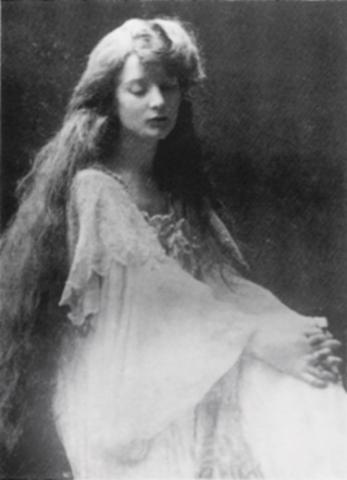All About Eva
In her new book, Artemis Leontis tells the story of a Mawrter whom one contemporary called "the only ancient Greek I ever knew."
Eva Palmer arrived on campus in 1898, and although her time here was brief, Bryn Mawr left its mark. For it was at Bryn Mawr that she began her study of Greek and fell under the spell of the classical world.
Expelled from campus for reasons that remain unknown, she set off for Paris. She moved in with the expatriate writer Natalie Clifford Barney and, as a participant in Barney’s celebrated salon, became a key player in the theatrical performances staged there. To design costumes for one of them, she worked with Raymond Duncan and his wife, Penelope Sikelianos, to replicate the drapery of ancient Greek dress. From then on, Palmer gave up conventional fashion for dress and sandals handmade in the Grecian style.
In 1906, she traveled with Penelope to Greece. There, she met the poet Angelos Sikelianos and, within a year, married him. Together, the couple revived the Delphic Festivals, which would, they dreamed, engender global understanding and solidarity.
The first, held in 1927, included a Pyrrhic war dance, sporting contests, a revival of the Septiria ritual, and Eva’s staging of Aeschylus’s Prometheus Bound. Three years later, a second festival reprised elements of the first and added a second theater piece, Eva’s staging of another Aeschylus tragedy, The Suppliants.
But to underwrite it all, Eva spent her entire inheritance. In 1933, she returned, broke, to the U.S. For the first time ever, she had to work for a living. Her first job brought her back to Bryn Mawr to stage Euripides’ Bacchae. The production was, said the College News, “given in a new manner, far removed from the conventional methods of producing a Greek tragedy in English ... [and] distinguished by the treatment of the chorus as an active medium for dramatic expression.”
Eva hoped for a career bringing ancient Greek drama to campuses nationwide. Instead, she ended up cobbling together a living—with the Federal Theater Project, with the dance pioneer Ted Shawn, as a craft weaver.
In 1952, she returned to Greece, an honored guest for a third, watered-down Delphic Festival. But on the festival’s last day, she collapsed. She died five days later and was buried next to Angelos—at Delphi.
Published on: 06/03/2019

